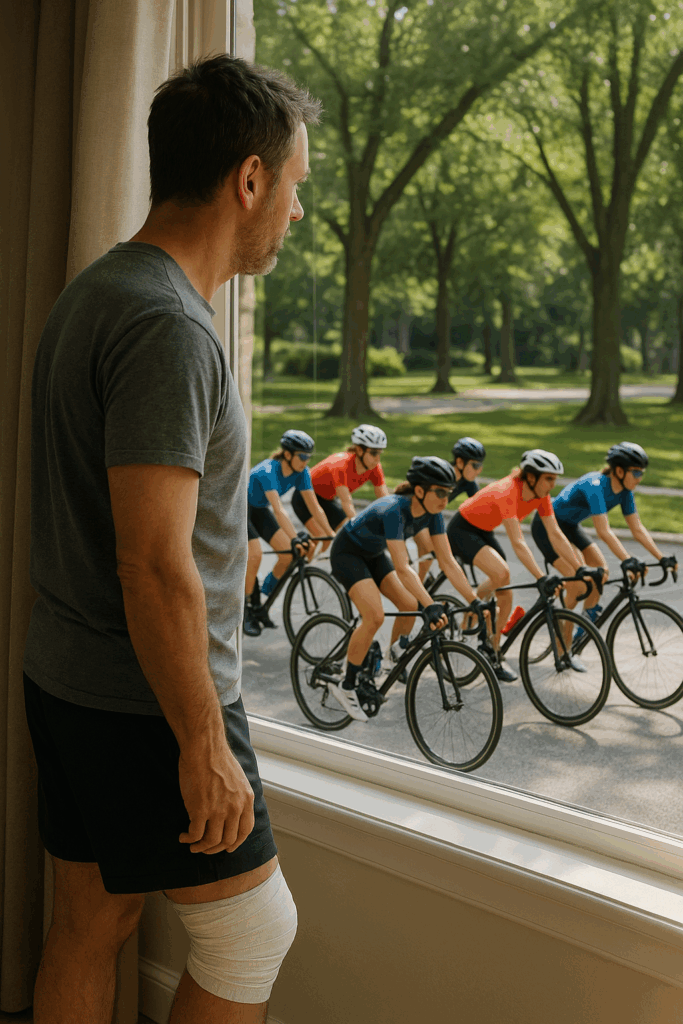Common Injuries and Natural Healing Timelines
Athletes, whether recreational or professional, frequently deal with injuries such as tendonitis, muscle strains, and ligament sprains. These injuries heal at different speeds depending on severity, age, and overall health.

- Tendonitis (e.g., elbow or rotator cuff): May take 6–12 weeks to heal naturally.
- Muscle strain or tear: Minor strains can recover in 2–3 weeks, while more significant tears may require 2–3 months.
- Ligament injuries: Mild sprains can heal in 4–6 weeks, while moderate to severe injuries may take 3–6 months without intervention.
These timelines reflect the body’s innate ability to remodel tissue. However, peptides can shift the healing curve, accelerating repair processes and improving tissue quality.
The Role of Peptides in Recovery

BPC-157
BPC-157, a gastric pentadecapeptide, has demonstrated regenerative potential across multiple tissue types. In rat models, Achilles tendon strength was increased by 47–58% within two weeks compared to controls, and angiogenesis was significantly enhanced to improve blood flow at the injury site. It has also been shown to reduce pro-inflammatory cytokines such as TNF-α and IL-6 by 40–60% in inflammatory bowel and musculoskeletal injury models.¹,²
Thymosin Beta-4 (TB-500)
Thymosin Beta-4 promotes angiogenesis and accelerates migration of repair cells. Preclinical studies have shown 25–35% faster healing of soft tissue injuries and up to 40% reduction in fibrosis. In cardiac injury models, TB-4 reduced inflammatory infiltration and promoted vascular regeneration, highlighting its systemic regenerative effect.³,⁴
GHK-Cu
The copper peptide GHK-Cu is a potent stimulator of collagen remodeling. In skin and connective tissue models, GHK-Cu increased collagen production by up to 70%, accelerated wound closure, and reduced scar tissue formation by 30–50%. In musculoskeletal contexts, this means improved fiber alignment and lower reinjury risk.⁵
GH Secretagogues (Ipamorelin, CJC-1295)
These peptides increase pulsatile GH release, thereby elevating IGF-1, which is crucial for tendon and muscle repair. In controlled studies, GH and IGF-1 administration improved collagen synthesis and tendon thickness by 30–50% during remodeling phases. Importantly, Ipamorelin does this without raising cortisol or prolactin, making it suitable for long-term recovery protocols.⁶,⁷
Quantified Evidence of Impact
- Tendon healing: BPC-157 improved load-bearing capacity by 58% in transected rat Achilles tendon after 14 days.¹
- Soft tissue regeneration: TB-4 accelerated wound healing by 30%, reduced fibrosis by 40%, and improved angiogenesis markers.³,⁴
- Collagen remodeling: GHK-Cu increased collagen synthesis by 70% and improved alignment of healing fibers.⁵
- Inflammation control: BPC-157 reduced pro-inflammatory cytokines by 50%, leading to faster functional recovery in tendon and muscle models.²
- Bone and muscle: In segmental bone defects, BPC-157 increased new bone volume by 62% at 28 days. Muscle repair was accelerated by 40% in crush-injury models.²
- Nerve healing: BPC-157 restored functional gait in sciatic nerve injury by 60% faster than controls.²

Age, Hormones, and Healing Potential
Healing capacity declines with age due to reductions in testosterone, GH, and IGF-1.
- Younger athletes: often recover quickly without pharmacological support.
- Older athletes: benefit disproportionately from peptides, since these compounds restore regenerative signals that naturally wane with age.
TRT (testosterone replacement therapy) has been shown to improve muscle mass and functional recovery in older men, while GH secretagogues can mimic the natural repair-enhancing effects of youthful GH pulses.⁸
Healing Still Takes Time
Even with peptides, healing is not immediate. They accelerate cell signaling, angiogenesis, and collagen synthesis, but do not bypass the body’s fundamental repair timelines.
- Early changes: pain relief and mobility improvements often appear within 1–2 weeks.
- Structural healing: measurable tissue repair and collagen remodeling typically require 4–12 weeks depending on injury severity and age.
Synergy With Lifestyle
For best outcomes, peptides should be combined with foundational practices:
- Sleep: supports GH release and cellular repair.
- Nutrition: provides amino acids and cofactors for collagen and tissue synthesis.
- Load management: prevents reinjury during accelerated healing phases.
Take-Home Message
Peptides are a powerful adjunct for athletes seeking faster recovery. Preclinical and early clinical studies consistently demonstrate:
- 40–70% faster recovery in soft tissue injuries
- 30–50% reductions in scar tissue formation
- 50–60% improvements in tendon strength within weeks
- Marked reductions in inflammatory cytokines
For aging athletes or those on TRT, peptides can restore recovery potential closer to youthful levels. But healing still requires time, sleep, and smart training. Peptides accelerate the repair team already inside your body — they don’t replace it.
References
Vukojević V, et al. BPC-157 accelerates healing of transected rat Achilles tendon. J Orthop Res. 2010;28(7):1004-1010.
Sikiric P, et al. Stable gastric pentadecapeptide BPC-157: Novel therapy in gastrointestinal tract and other organ systems. Curr Pharm Des. 2018;24(18):2002-2025.
Bock-Müller I, et al. Thymosin beta-4 protects cardiomyocytes and promotes angiogenesis after myocardial infarction. FASEB J. 2009;23(11):3826-3836.
Goldstein AL, Badamchian M. Thymosin beta-4: A multi-functional regenerative peptide. Ann N Y Acad Sci. 2005;1056:76-84.
Pickart L, Margolina A. Regenerative and protective actions of the GHK-Cu peptide in the light of the new gene data. Int J Mol Sci. 2018;19(7):1987.
Doessing S, et al. Growth hormone stimulates the collagen synthesis in human tendon and skeletal muscle. J Appl Physiol. 2010;108(3):612-618.
Bowers CY. Unnatural growth hormone-releasing peptide begets natural ghrelin. J Clin Endocrinol Metab. 2001;86(4):1464-1469.
Urban RJ, et al. Testosterone administration to older men improves muscle function: molecular and physiological mechanisms. Am J Physiol Endocrinol Metab. 1995;269(6):E820-E826.